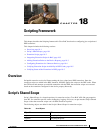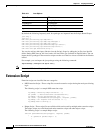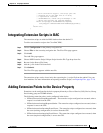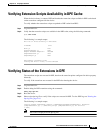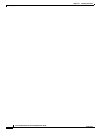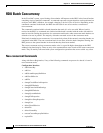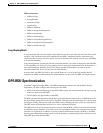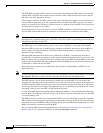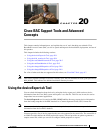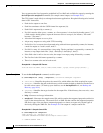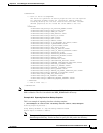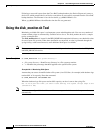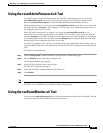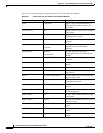
19-3
Cisco Broadband Access Center 3.8 Administrator Guide
OL-27172-01
Chapter 19 RDU and DPE Connection Management
DPE-RDU Synchronization
IPDevice Interface
• addDeviceType
• changeDefaults
• deleteDeviceType
• regenConfigs
• IPDevice.addNode
• IPDevice.changeNodeProperties
• IPDevice.deleteNode
• IPDevice.addNodeType
• IPDevice.changeNodeTypePriority
• IPDevice.changeNodeTypeProperties
• IPDevice.deleteNodeType
Long-Running Batch
A long-running batch is one that requires more than two seconds to run. The only batch that fits into this
category is the synchronization batch submitted by the DPEs. Additional batches can become long
running batches if custom extension points are used to interface with external systems (e.g. publishing
to an external database).
Long-running batches, interleaved with non-concurrent batches, can create an impression that the RDU
is not responding or is frozen. If a long-running batch is in progress and the next batch in the queue is a
non-concurrent batch, the RDU waits for all current batches to finish before it starts to run the
non-concurrent batch. It also will not start any other batches.
At those times, the RDU will seem to not respond. However, as soon as the long-running batch is
completed, the RDU resumes running the queued batches. At this point, the RDU will respond again.
DPE-RDU Synchronization
Cisco BAC supports multiple DPEs. The DPEs communicate with devices and the RDU. During
installation, you must configure the following for each DPE:
• Name of the provisioning group to which this DPE belongs; this name determines the logical group
of devices serviced by this DPE.
• The IP address and port number of the RDU.
The RDU generates the instructions for the device and sends the new instructions to all DPEs that service
the provisioning group of the given device. The RDU will regenerate the instructions for a device when
certain provisioning API calls are made at the RDU (such as changing the Class of Service of the device).
The DPE stores the instructions and uses it to service subsequent requests.
The DPE persists all device instructions that it receives from the RDU to disk. Each instruction includes
an identifier (device identifier or file name) and a revision number which is incremented every time the
instruction is regenerated. In addition to events (dynamic notifications) fired by the RDU to all DPEs
when a given configuration changes, there is also an automatic synchronization process which is used to
bring DPE up-to-date with the RDU.



